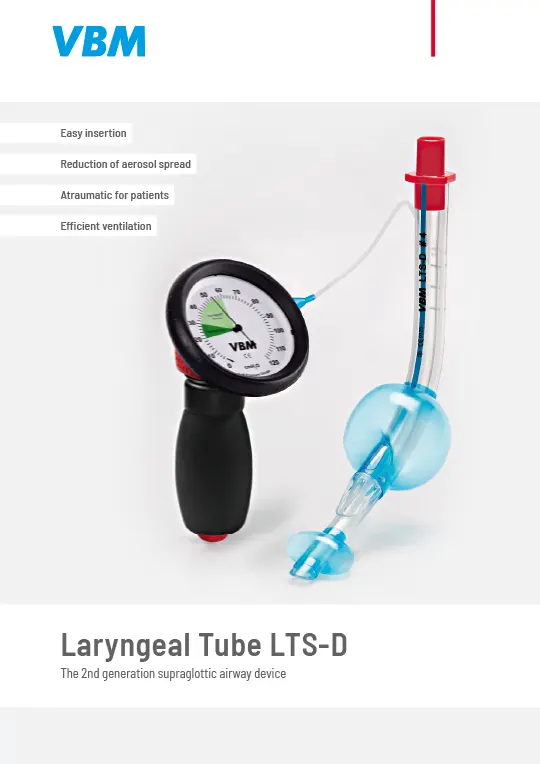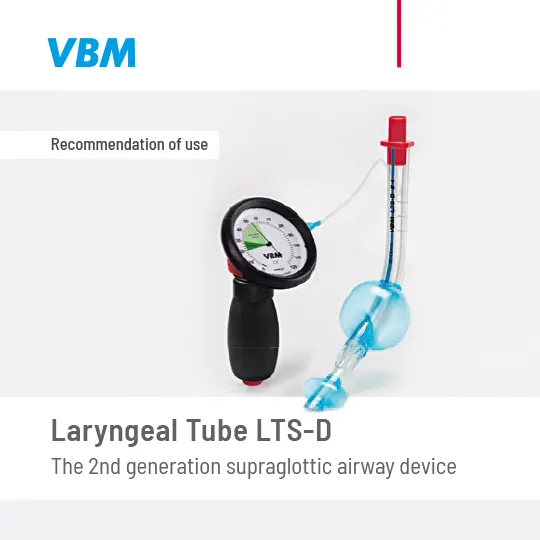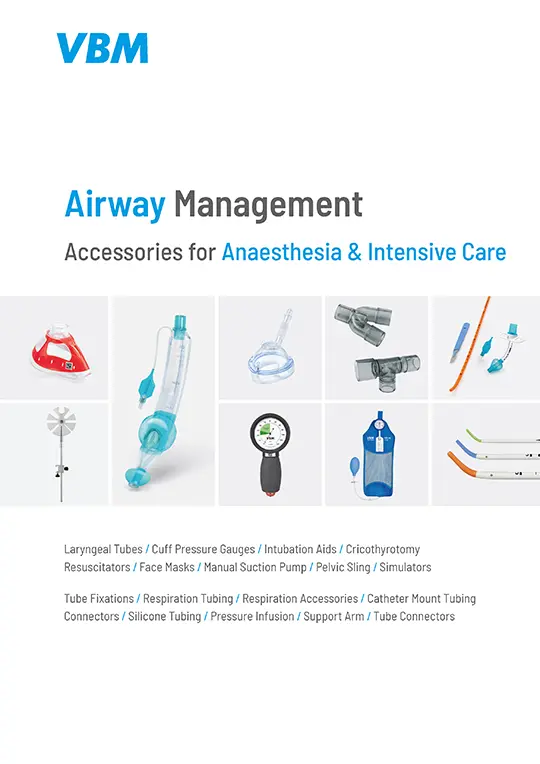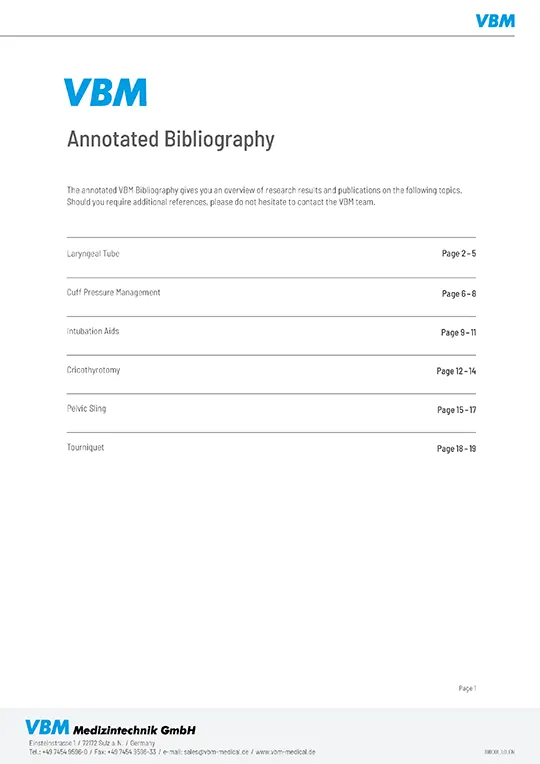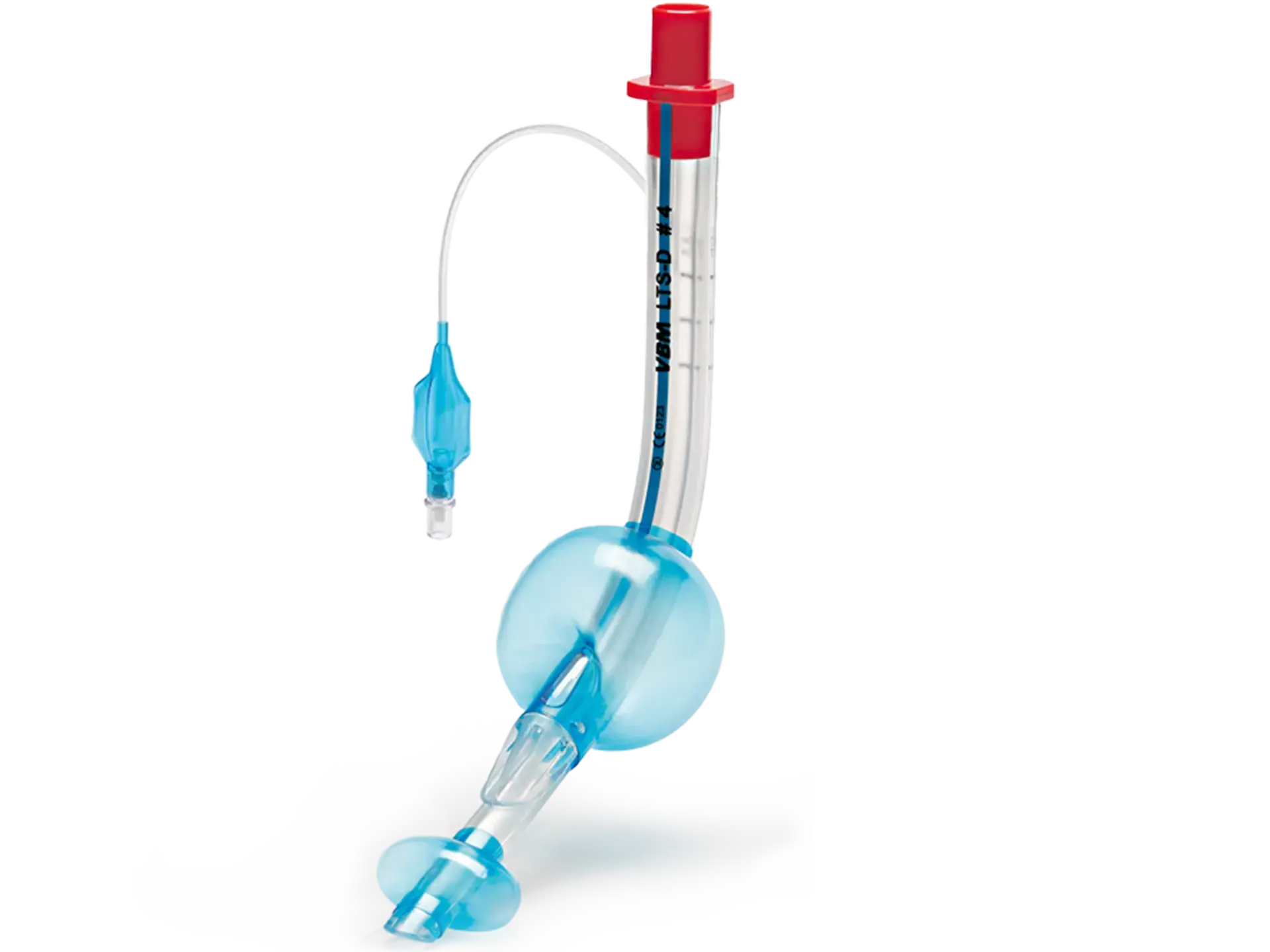
Laryngeal Tube LTS-D
The 2nd generation
supraglottic airway device
Easy insertion
Reduction of aerosol spread
Atraumatic for patients
Efficient ventilation
The Laryngeal Tube LTS-D is a 2nd generation supraglottic airway (with drain tube) and an alternative adjunct to temporarily secure the airway during emergency situations, e.g. cardiopulmonary resuscitation, in hospital as well as prehospital environments.

——Features
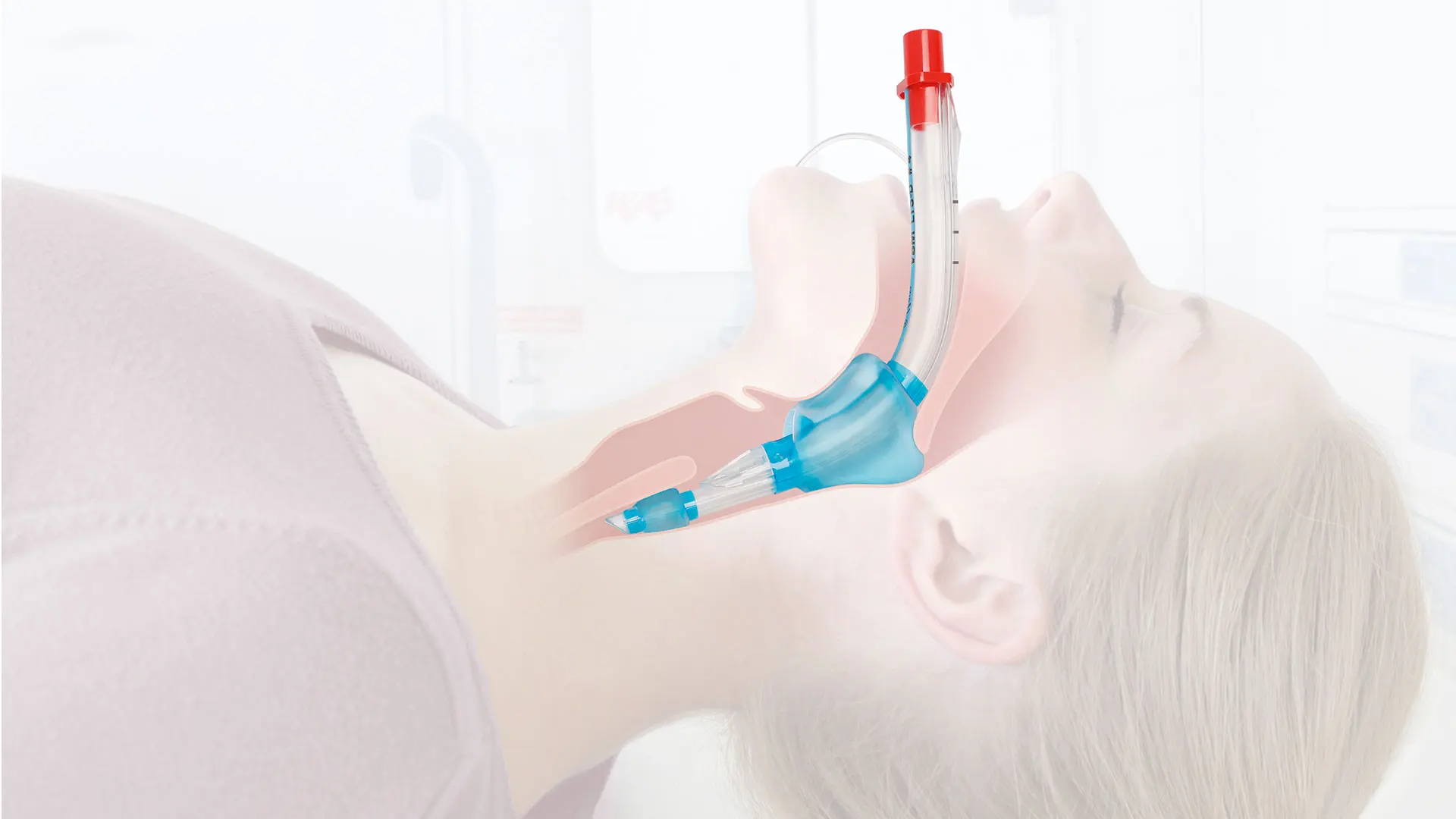
Multiple ventilation outlets for efficient ventilation
Drain tube to prevent the risk of aspiration
Thin walled cuffs allow maximum airway leak pressure and reduce the spread of aerosol thanks to efficient pharyngeal sealing. This is achieved at low cuff pressure (<60 cmH20) making the LTS-D atraumatic to the mucosa.
Teeth mark as indicator for correct depth of insertion
Easy Insertion
The LTS-D is easy to insert and use, even with minimal training (1). In situations with limited space or in patients with minimal mouth opening the slim design of the laryngeal tube facilitates insertion (2). The teeth mark is an indicator regarding the correct depth of insertion and for orientation and repositioning purposes.
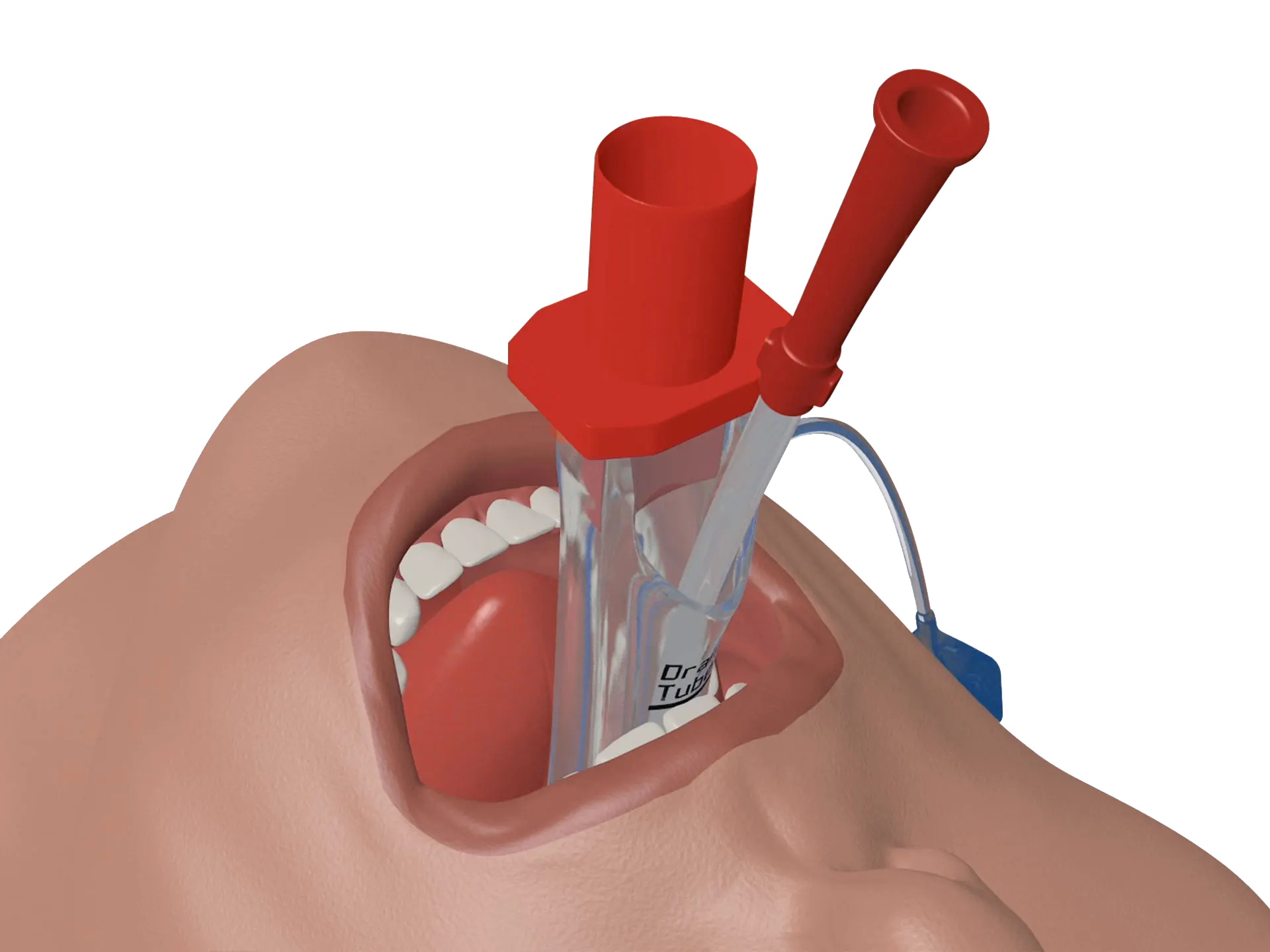
Drain Tube / Gastric Tube
- Drain tube recommended as current standard in international guidelines. All LTS-D sizes include the drain tube as standard
- Providing the largest suction capability with easy access can accomodate up to 18 Fr gastric tube
- Insertion of a gastric tube is helpful to confirm correct placement of the LTS-D
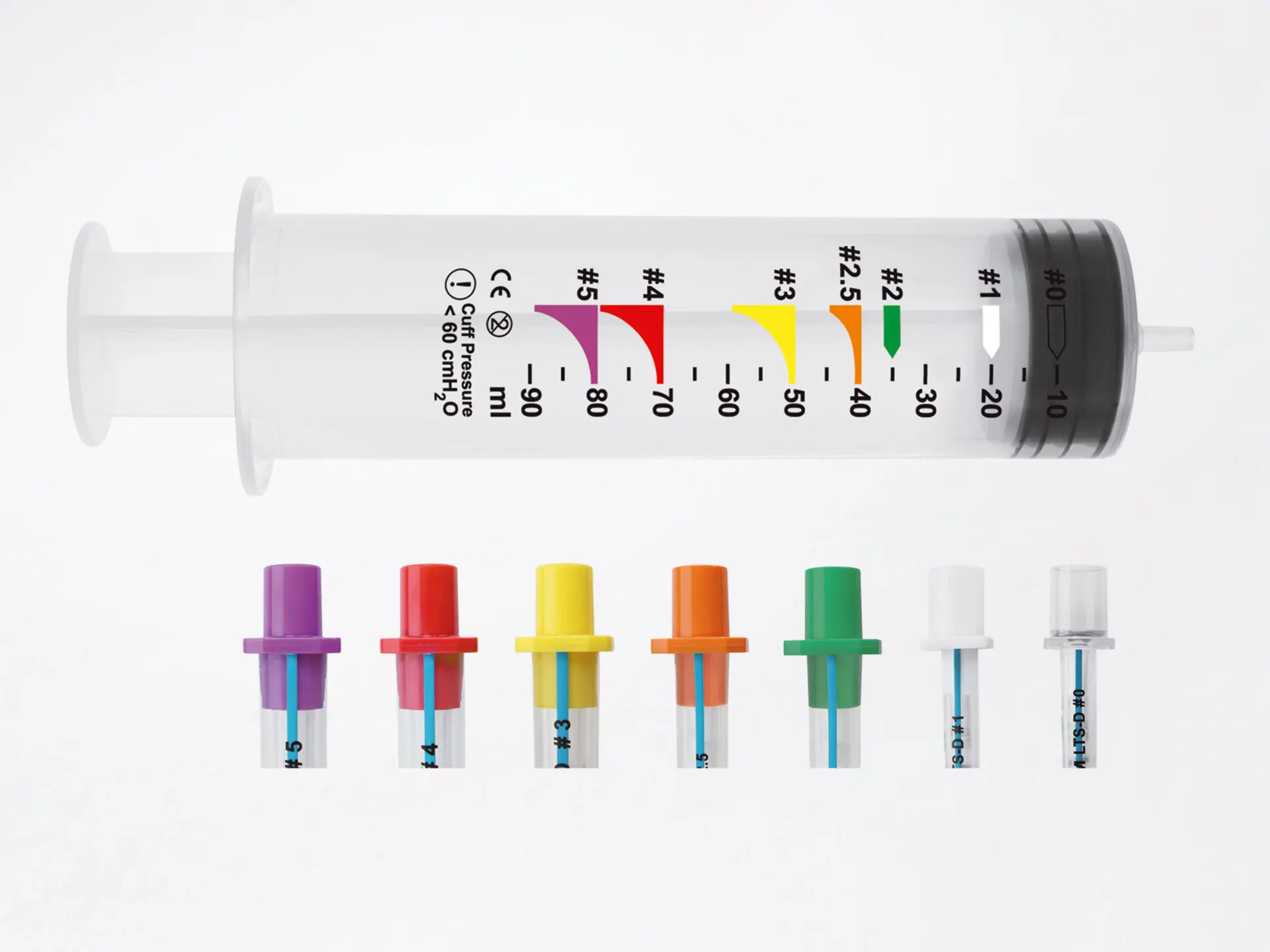
Colour Coding
The colour coded system has proven invaluable in emergencies as the syringe and connectors indicate the recommended maximum inflation volume.
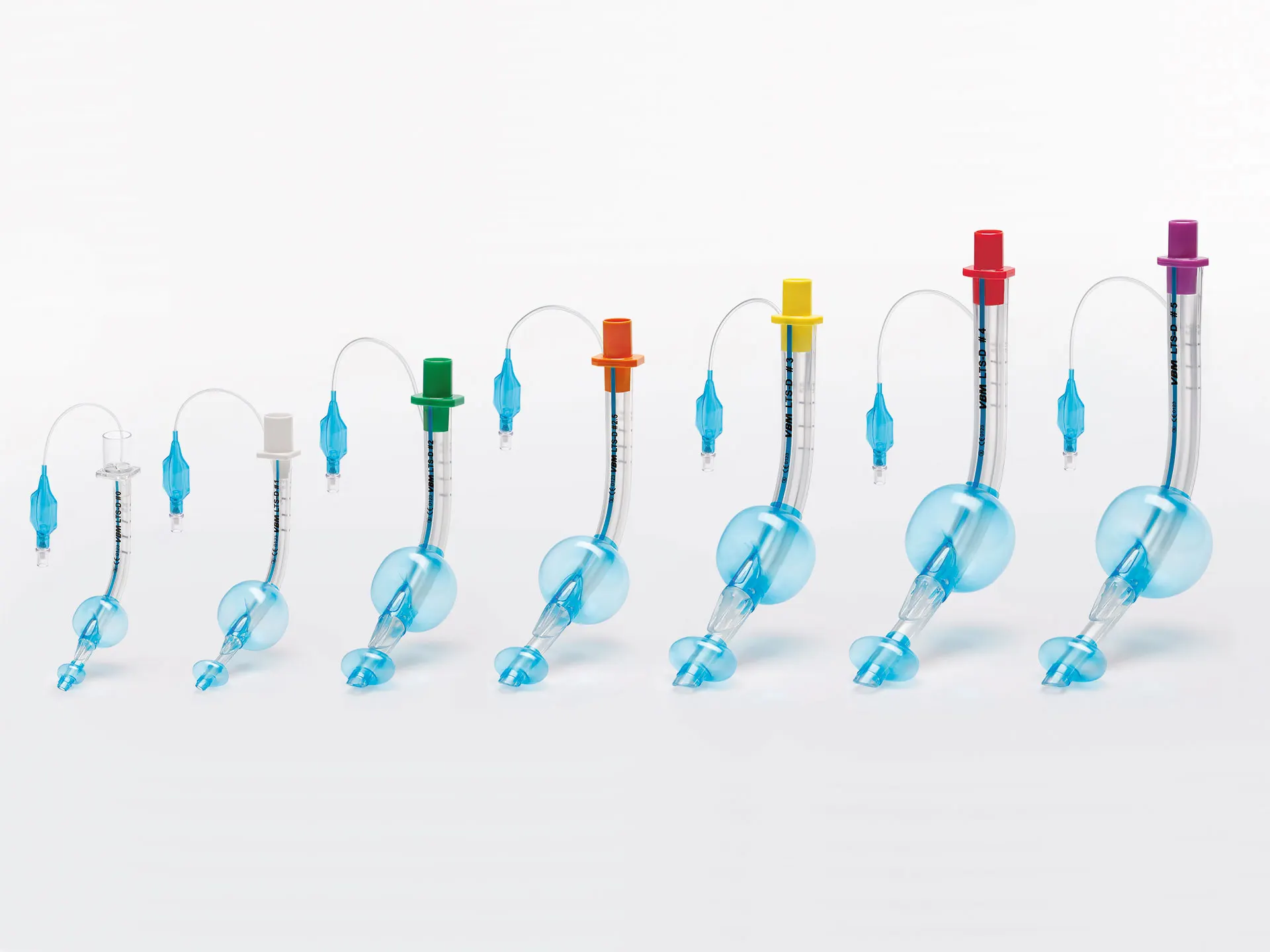
Sizes Laryngeal Tube LTS-D
Complete product range, available from newborn to adult.
——Clinical Features
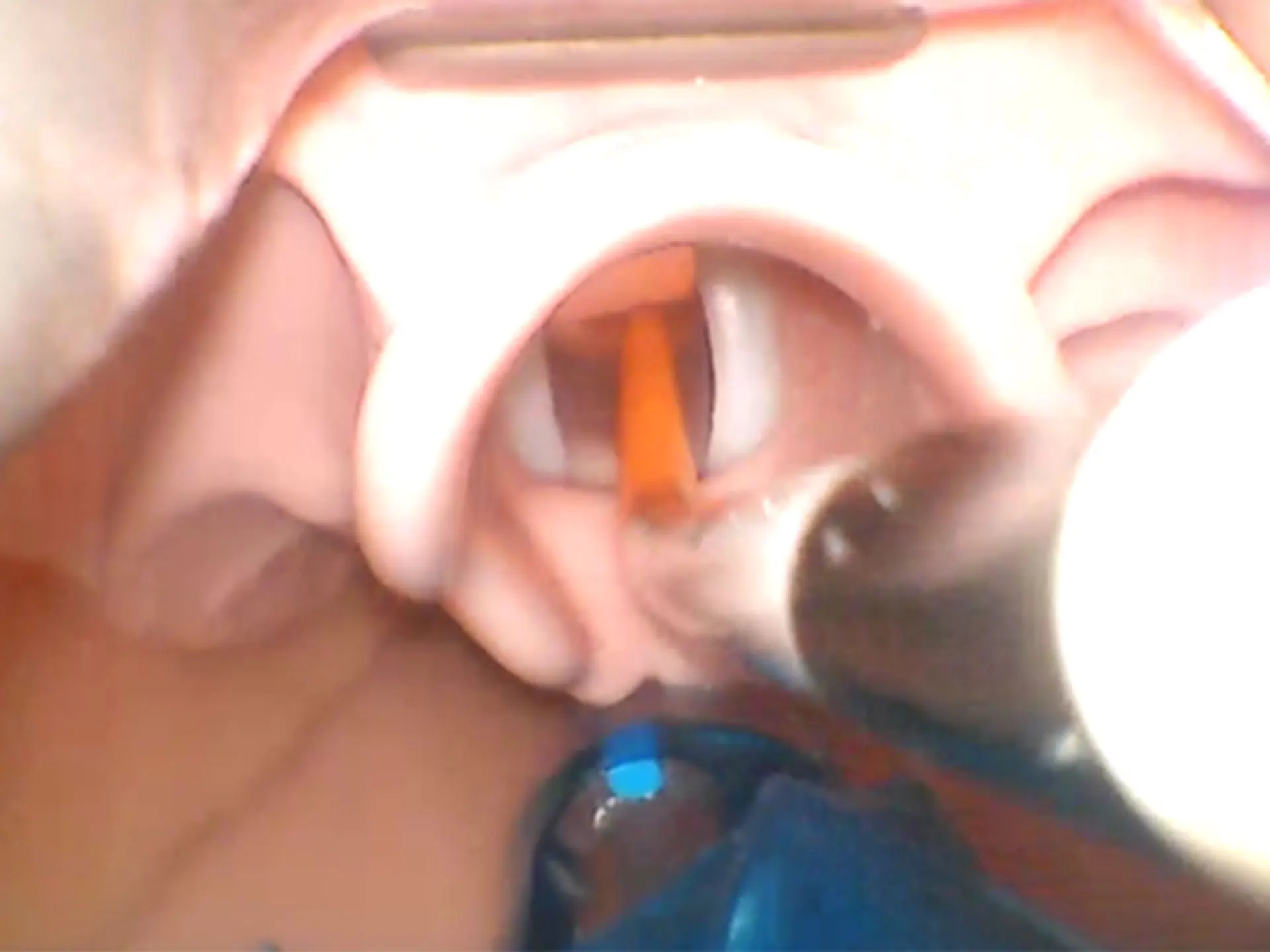
Exchange of LTS-D for Tracheal Tube
Possibility of exchanging the LTS-D (in situ with deflated cuffs) for a Tracheal Tube using Video Laryngoscopy and a Bougie (6, 7, 8).
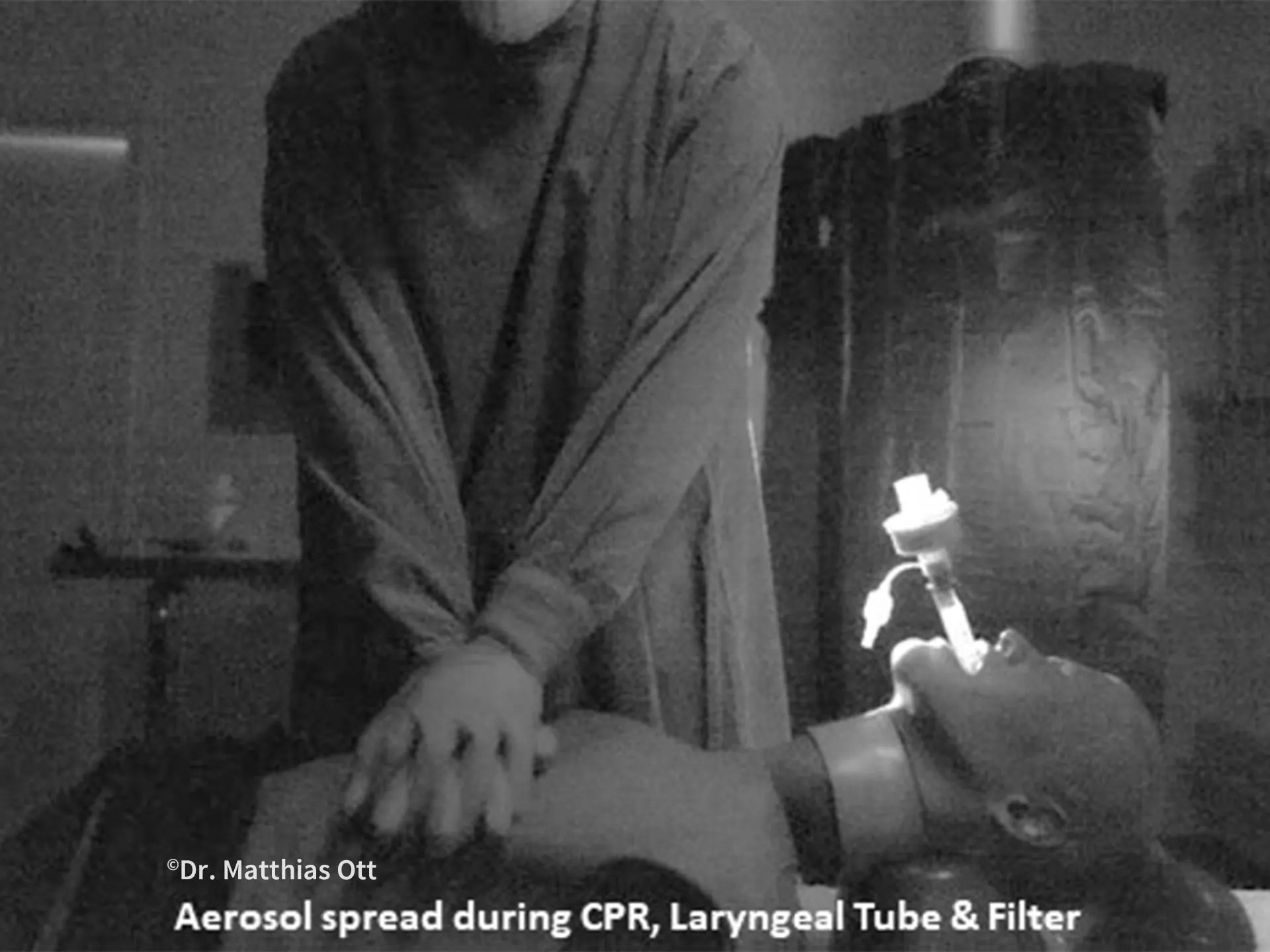
Reduction of Aerosol Spread (3)
The application of the LTS-D in combination with a breathing system filter leads to a remarkable reduction of aerosol spread during aerosol generating procedures (AGP) e. g. chest compressions.
No-flow-time
Easy to insert especially in cases of cardiac arrest without interruption of chest compressions. This leads to significant reduction in no-flow-time (4).
Uninterrupted Chest Compressions
Due to a very high airway leak pressure, uninterrupted chest compressions during CPR are possible.
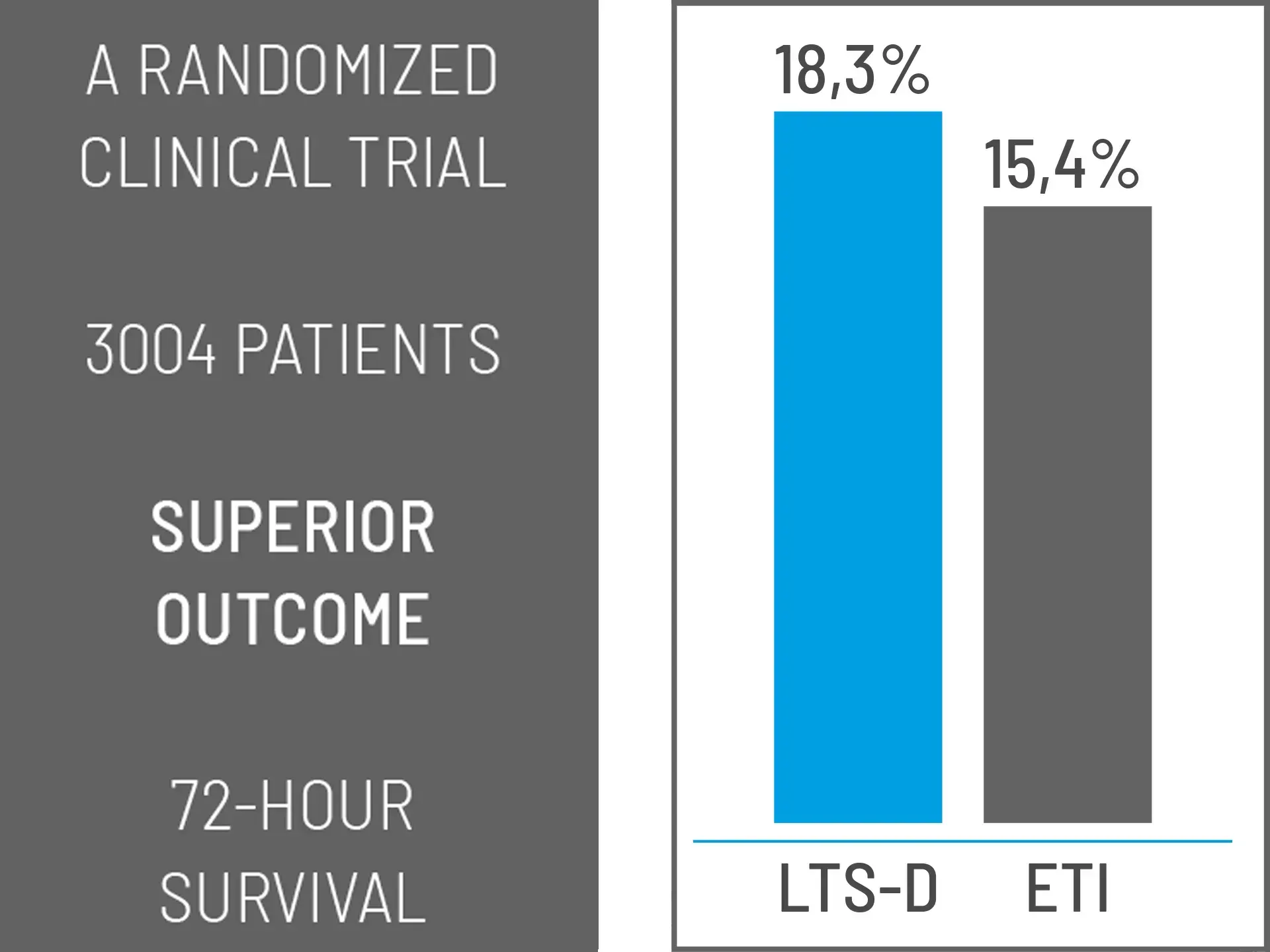
Higher Survival
(Higher 72-hour survival in adults with OHCA (LTS-D compared to ETI) (5).
——Application Video
——Additional Information
——References
(2) Knacke, Engelhardt (Hrsg.) Fallbeispiele Rettungsdienst, Band II, S+K Verlag, 2006.
(3) Ott M, et al., „Exploration of strategies to reduce aerosol-spread during chest compressions: A simulation and cadaver model,” Resuscitation, 2020.
(4) Wiese C:H.R. et al. „Reduction in no flow time using a laryngeal tube. Comparsion to bag-mask ventilation,” Anaesthesist, 2008.
(5) Wang H.E. et al. „Effect of a Strategy of Initial Laryngeal Tube Insertion vs Endotracheal Intubation on 72-Hour Survival in Adults With Out-of-Hospital Cardiac Arrest. A Randomized Clinical Trial,” JAMA, 2018.
(6) Schalk R, Weber C, Byhahn C, Reyher C, Stay D, Zacharowski K, Meininger D, Anaesthesist 201261:777–782, Published: August 29, 2012.
(7) Dodd K, Kornas R, Prekker M, Klein L, Reardon R, Driver B, J Emerg Med. 2017 Apr;52(4):403-408,Published: November 19, 2016.
(8) Klein L, Paetow G, Kornas R, Reardon R, Acad Emerg Med. 2016 23(3):219-370, e2-e7, Published:March 10, 2016.
——Related Topics & Products
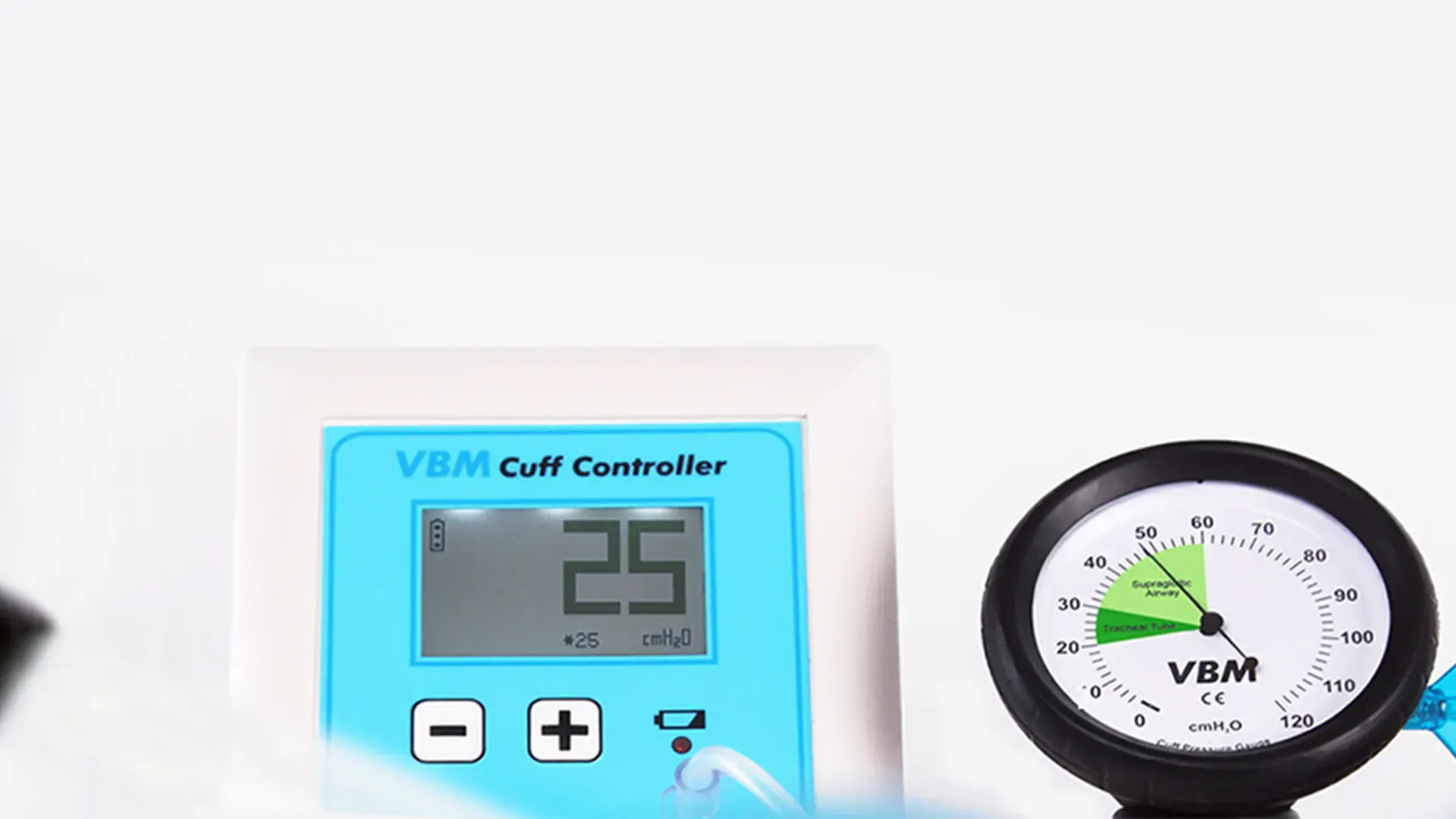
Cuff Pressure Gauges
WEB001_PID-01-02-01_AC_EN

